 Fibonacci and Nature
Fibonacci and Nature
| Click here for MOVING BACKGROUND |
This is a row of numbers, and each number in the row equals the last two numbers added together. If the first two numbers in the series are 1 and 1, then the next number is 1+1=2. The next number is 1+2=3 then 2+3=5 and so on. The series starts 1 1 2 3 5 8 13 21 34 55 89 144 ... |
using the Fibonacci Formula |
If you have read NUMBERS:The Key to the Universe, you'll be amazed at the links between Fibonacci's series and nature. |
(Otherwise it's usually a number in the series x 2. Flowers with 4 or 6 petals are very common.) | ||
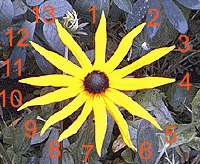
|
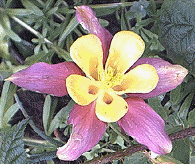
|
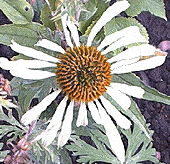
|
This flower has 13 petals. Although this might seem strange, remember that 13 is a Fibonacci number! |
This flower has two different sets of petals, and both sets have 5 petals which is a Fibonacci number. |
Look carefully! How many petals does this flower have? |
Here's Vicky at our local fruit and veg shop with brussel sprouts, still on their stalk.Look how they form two spirals! Going one way there are 2 spirals, and going the other way there are 3 spirals. It's no mistake that these are two consecutive numbers in the Fibonacci sequence. |
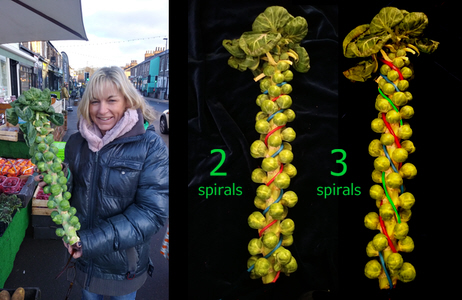
|
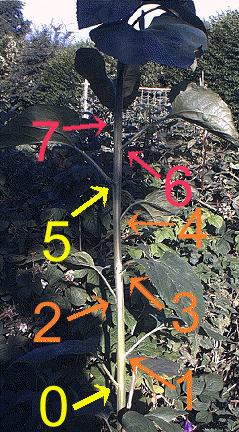
|
If you've read page 33 of the Numbers book, you'll have seen the diagram of how the leaves grow from a sunflower stem. In case you thought the diagram was just invented, we've taken a picture of a real sunflower to prove it to you.This sunflower was planted in April and the picture was taken in July. Look at how the leaves are joined to the stem. You'll see that if you start at leaf "0" and count upwards, the "5" leaf comes out of the stem exactly above the "0" leaf. You'll also see that the "6" leaf comes out exactly above the "1" leaf. The "7" leaf just about comes out above the "2" leaf too - the only reason it's twisted round a bit is that the whole thing got walloped by a football when it was small. Even Murderous Maths can't allow for things like that happening. |
Here are a couple of photos to show something even stranger: |
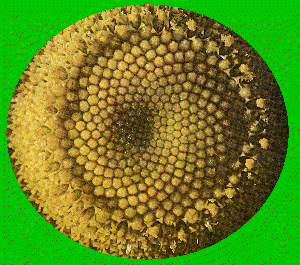
|
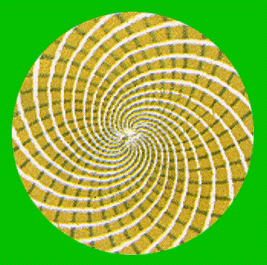
|
You may well have seen the pattern |
This diagram shows more clearly how
the spirals are arranged but here's
the strange bit: there are 34 spirals
going one way and 21 spirals going the
other way. |
We found a website which has loads interesting stuff about Fibonacci and nature - it even shows you how to spot the spirals in a cauliflower! Have a look at this: Dr Ron Knott's brilliant Fibonaci website |
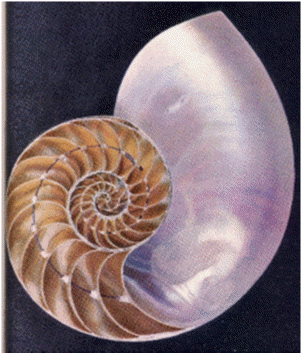
Finally - the "Numbers" book introduced you to one of the planet's most amazing creatures: the Nautilus. Here's a photo of one that got attacked by some Pure Mathematicians (and NO it wasn't us so don't write and complain): |
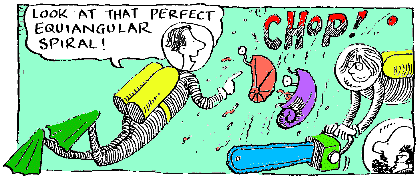
|
|
|

We found the spiral pictures on this page lying loose
in a second hand bookshop.
We'd like to have sought permission to use them but didn't know who to ask. If you can
prove you own the copyright, do please get in touch.